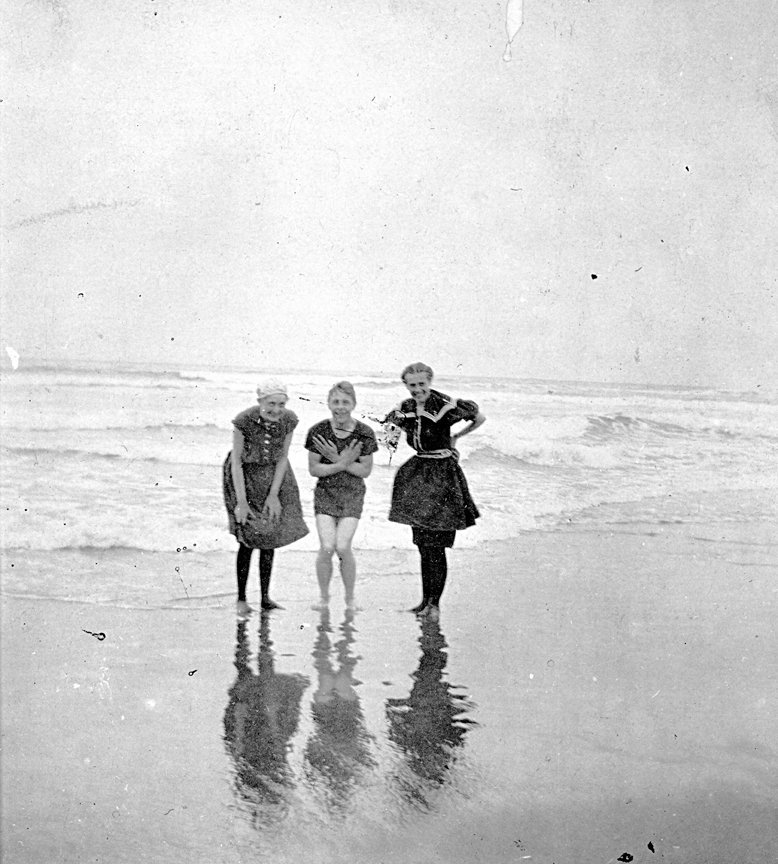This photograph depicts three beachgoers, two young ladies and one young man, braving the cool Pacific Northwest weather as waves break around their ankles. They are each wearing bathing suits that were common around 1900. Bathing suit fashion in the United States, particularly for women, underwent an evolution at the turn of the twentieth century. Cultural attitudes toward swimming, modesty, and the female form influenced that transition.
Bathing suit fashion for women underwent many changes between 1850 and 1900. Whereas it was common for early bathing dresses of the century to have weights in the hems to keep the skirts from floating upward, the more practical "Princess Style" of the 1880's included ankle-length bloomer trousers connected to a blouse. A full-length skirt completed the ensemble although, by the 1890s, many women chose to abandon the extra piece. Body sculpting corsets underneath bathing costumes were common throughout the nineteenth century. But by the early 1900s, dress, trouser, and arm lengths began to recede and fewer women wore corsets.
Contributing to the change in bathing attire was the desire of women to swim. As early as the 1880s, popular magazines began including complaints from women countering the cultural perception that women did not swim because they were innately afraid of the water. An 1888 article in Outing magazine, for example, brought attention to the difference between men and women's suits, noting that while men's suits traditionally clung closer to the body, women found it more difficult to maneuver in the water in their bulkier and more constricting suits.
But swimming suit fashion and notions of acceptable levels of modesty were slow to change. Nearly twenty years later, in 1907, Australian swimmer and vaudeville actress Annette Kellerman was arrested for indecent exposure on Boston's Revere Beach for wearing a practical suit that consisted of a sleeveless body stocking with trousers cut two inches above the knees. By 1910, thanks to women athletes like Kellerman and Adeline Trapp-the first woman to swim New York's East River-women interested in swimming were not arrested for wearing a practical suit if they used discretion and treated it as a piece of athletic equipment.
Further reading:
Lencek, Lena and Gideon Bosker. Making Waves: Swimsuits and the Undressing of America. San Francisco: Chronical Books, 1989.
Written by Sara Paulson, © Oregon Historical Society, 2007.

